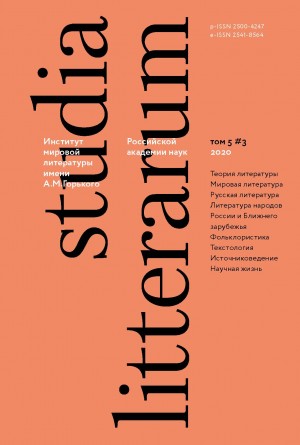MEREZHKOVSKY’S THE FOURTEENTH OF DECEMBER: A NOVEL ABOUT THE OCTOBER REVOLUTION
Journal title: Studia Litterarum
Authors: O.А. Bogdanova
Subject(s): Literature, Languages and Literature

Journal title: Studia Litterarum
Authors: O.А. Bogdanova
Subject(s): Literature, Languages and Literature
Journal title: Studia Litterarum
Authors: N.R. Neiman
Subject(s): Literature, Languages and Literature
Journal title: Studia Litterarum
Authors: N.V. Nalegach
Subject(s): Literature, Languages and Literature
Journal title: Studia Litterarum
Authors: Yu.G. Khazankovich
Subject(s): Literature, Languages and Literature
Journal title: Studia Litterarum
Authors: A.T. Sibgatullina
Subject(s): Literature, Languages and Literature
Journal title: Studia Litterarum
Authors: L.V. Fadeeva
Subject(s): Literature, Languages and Literature
Journal title: Studia Litterarum
Authors: Е.G. Paderina
Subject(s): Literature, Languages and Literature
Journal title: Studia Litterarum
Authors: E.Yu. Kulikova
Subject(s): Literature, Languages and Literature
Journal title: Studia Litterarum
Authors: L.A. Kolobaeva
Subject(s): Literature, Languages and Literature
Journal title: Studia Litterarum
Authors: N.Yu. Kharitonova
Subject(s): Literature, Languages and Literature
Journal title: Studia Litterarum
Authors: А.V. Gevorkyan
Subject(s): Literature, Languages and Literature
Journal title: Studia Litterarum
Authors: M.E. Malikova
Subject(s): Literature, Languages and Literature
Journal title: Studia Litterarum
Authors: T.V. Kudryavtseva
Subject(s): Literature, Languages and Literature
Journal title: Studia Litterarum
Authors: T.N. Krasavchenko
Subject(s): Literature, Languages and Literature
Journal title: Studia Litterarum
Authors: M.L. Andreev
Subject(s): Literature, Languages and Literature